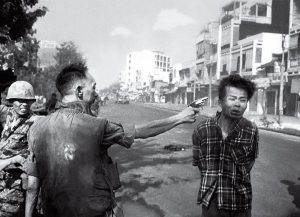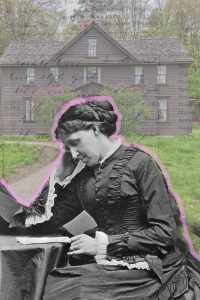What if you found yourself dancing for a purpose much bigger than yourself? Could a dance have the power and the ability to bring back life or rebuild the earth? When people dance for a purpose, others see and listen; but maybe not in the right way. Could the events that occurred at the Battle of Wounded Knee be the cause for such a pivotal moment in history? In this particular case, religion is at the heart of the Sioux Ghost Dance. The power of such a religion is almost unseen in today’s society. Today, when people picture Indians dancing, they picture a massive fire, guns being fired, and many more ritualistic signatures. An extraordinary element of this dance is that it was a religious ceremony, just like taking communion in Church. During this period in history, life was drastically changing for the Sioux Indians. Some of their problems included loss of their land to the whites, scarcity of food, and their freedom being taken away from them. In search of regeneration of the earth and a connection to nature, the Sioux sought to restore things back to earlier times.

The dances that were most important to the Sioux were the Sun Dance and Ghost Dance. The most religious one of the two was the Sun Dance. This was a self-sacrifice ritual with dancing, drums, praying, and self-made cuts to the body. The cuts were made to bring the people closer in prayer and sacrifice for their loved ones. The Ghost Dance was a ritual that led the Battle of Wounded Knee Creek. The purpose of the famous dance was for the earth to restore the earth’s caretakers to their original life of beauty. The Cheyenne, Arapahos, and Kiowas tribes sent emissaries to a man named Wovoka, who said he was the messiah and claimed to be a visionary. This man proclaimed to people that he was shown songs and dances when he had died for some time. He gave the people instructions for the dance.1 Wovoka spoke of the weather and of the future ahead. He also told them to be nonviolent and behave admirably. He changed the tactics of the Indians from war to peace, and he told them that following the orders of the whites would further develop them. The Sioux tribes were influenced by the man and stopped all their warlike ways of life in order to prepare themselves for the happiness to come. The dance was made for peace with the white people; but the Sioux made changes to make it a cleansing ritual for the whites to leave the land. The dance made its mark and made a wave against the white man. 2
The U.S. government broke the Treaty of Fort Laramie and broke up the Great Sioux Reservation of South Dakota into five smaller reservations. The treaty established a relationship between the Sioux, various other tribes inhabiting the Great Plains, and the United States government. The tribes agreed to cease any further violent activity among each other, and the U.S. government would have the ability to develop tracks and roads on their land. They also wanted to break the tribal relationships that were forming during this time. 3 Cavalry had taken Spotted Elk, also known as Big Foot, the chief of the Lakota, to Wounded Knee. The band of Indians had been doing what was asked of them by Wovoka to get the earth back to its full self. On the morning of December 29th, the cavalry tried to collect weapons from the Indians so that no violence would break out. One deaf Lakota warrior refused to give up his rifle. In the scuffle, the firearm had gone off and gun shots filled the morning sky with smoke. Many women and children were killed, making up the majority of the casualties in the massacre.4 Most of the people that participated in the Ghost Dance were not acting out in war-like ways, but despite the purpose of this dance, the government was still very anxious towards the tribes.
The Sioux were such a powerful tribe. They took what was needed and used all that the Great Spirit gave them. These fascinating people were certainly not the “savages” they have been depicted as, but they were people who used all parts of the earth with purpose and meaning. The lives lost at Wounded Knee were a tragedy. This truth of the Ghost Dance and the power of a singular tribe had the influence to show others throughout history that unity can be positive during hard times. The coming together of a people for a spiritual way of life can be meaningful for all that are surrounded by such a force.
- James Mooney, “Ghost Dance – The Messiah Letter from Wovoka,” accessed August 31, 2016, http://www.ghostdance.us/history/history-messiahletter.html. ↵
- Matthew A. Taylor, “‘Contagious Emotions’ and the Ghost Dance Religion: Mooney’s Science, Black Elk’s Fever,” ELH 81, no. 3 (2014): 1055–82. ↵
- Wikipedia contributors, “Ghost Dance,” Wikipedia, The Free Encyclopedia, https://en.wikipedia.org/w/index.php?title=Ghost_Dance&oldid=737020849;33 (accessed September 8, 2016). ↵
- Gregory Michno, “The Indian Trail of Broken Treaties,” Wild West 19, no. 2 (August 2006): 38. ↵



44 comments
Madeline Chandler
Such an informative and interesting article! Very captivating. Honestly, I am vaguely familiar with the story of the Sioux yet that this in depth. I think it is so interesting that the Sioux’s ghost dance was so sacred to them just like Christians consider baptism and communion so sacred. The massacre of Wounded Knee was so misfortune and happened out of just an unpredictable moment. It is devastating that Native Americans included the Sioux to give up their land and weapons that ultimately meant giving up their freedom. I loved reading your article. Great job!
Skyla Bonilla
Prior to reading the article I actually was aware of the Ghost Dance ritual and the Battle at Wounded Knee. However the author gave me a better insight on the purpose of the dance. I did not know that it came from a man who saw the dance when he died and I did not know that the true purpose was to get the Whites off of Native land. It was interesting to hear a little about other Native American rituals as well.
Maria Luevano
The Sioux tribe was such a great tribe and loved learning more about their religion. I love how connected to the earth they are and how they worship their ancestors. It is a beautiful religion and Mr. Sepulveda did an amazing job writing this article and gave amazing information. Even though the Native Americans in the U.S. were being taken advantage of and being run off their land, they still wanted to maintain peace. They hoped this would develop the white people to also want peace instead of war.
Elliot Avigael
The Sioux were definitely great warriors, and gave the US Calvary quite the challenge in battle. I think the federal government saw this ritual as a symbol of rebellion and hope; the main way to defeat an enemy is to strike at the heart of their faith, to take away their rituals and customs.
It is admirable to see how much Natives were tied to their land, and would go to the grave defending it.
Sehar Sohail
This article is short, but it is very informative as well. I like the way the writer was able to incorporate such important facts in this it must have taken a lot of time for it to become this precise. I always have heart about the battle of the Wounded Knee but never knew of the history. Thanks to this article I have learnt quite a lot. Its crazy how misunderstandings can lead to so many issues.
Camille Kwan
I like how you spoke about the Indians as civil humans. They wanted peace and prosperity for the land and themselves. They were willing to perform self sacrifices in order to preserve the land. The whites came and forced them into a treaty and onto a reserve and they went pretty much peacefully. Many lives were lost, but the Indians did not retaliate because they only cared about restoring peace and the land. Amazing article!
Jose Chaman
This article is really interesting because it correctly connects this religious expression with the battle The Wounded Knee. These types of religious expressions are not limited to the Sioux, in Peru, for example, there is a important ethnic dance called “The Dance of the Scissors.” This dance requires an exceptional skill because, as the name says, the dancer does stunts with scissors in his hands. On the other hand, it is sad to know how the government tried to extract the lands of the natives of Sioux.
Ryan Estes
I’ve always found Native American history fascinating. Before reading this article I think the only dance I had ever heard of was the rain dance. I thought it was interesting how the Sun dance requires self-sacrifices to be made. Another thing I found engrossing was how the Lakota warrior who refused to give up his rifle was deaf. He must have been confused as to why the cavalry was trying to make him give up his rifle.
Yazmin Garza
It is always hard to read about stories that involve the United States government and Native American tribes because they almost always end in a massacre of the Native American people, and this story is not an exception. It is sad to think that the natives were just trying to peacefully practice a religious ceremony and the whites attacked them almost unprovoked. It is even more terrible to think that the harsh treatment of Native American people still continues to this day.
Cameron Lopez
I’ve heard about The Battle of the Wounded Knee but never really learned about it. Only one misunderstanding led to so many deaths mostly consisting of women and children. It was very upsetting that the government tried to deem the natives as such savages. The most interesting part was the dance with the great spirit that they used in battle.